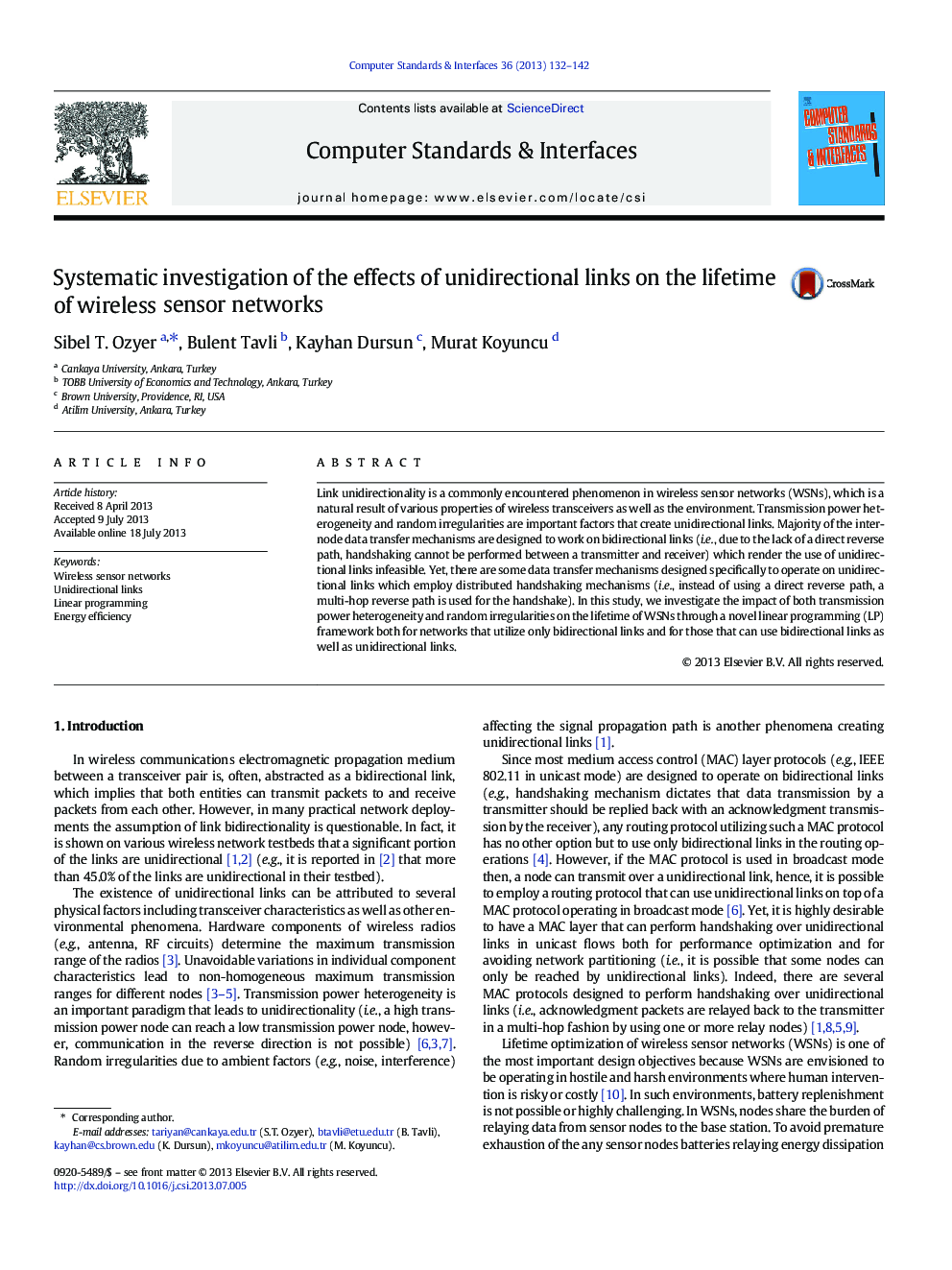| Article ID | Journal | Published Year | Pages | File Type |
|---|---|---|---|---|
| 454830 | Computer Standards & Interfaces | 2013 | 11 Pages |
•Unidirectional links improve the network lifetime significantly in sparse networks.•In dense networks unidirectional links does not prolong lifetime considerably.•Utilization of unidirectional links is more important in P-model than D-model.•The number of bidirectional links is higher than unidirectional links for D-model.•Unidirectional links decrease disconnection probability in general for P-model.
Link unidirectionality is a commonly encountered phenomenon in wireless sensor networks (WSNs), which is a natural result of various properties of wireless transceivers as well as the environment. Transmission power heterogeneity and random irregularities are important factors that create unidirectional links. Majority of the inter-node data transfer mechanisms are designed to work on bidirectional links (i.e., due to the lack of a direct reverse path, handshaking cannot be performed between a transmitter and receiver) which render the use of unidirectional links infeasible. Yet, there are some data transfer mechanisms designed specifically to operate on unidirectional links which employ distributed handshaking mechanisms (i.e., instead of using a direct reverse path, a multi-hop reverse path is used for the handshake). In this study, we investigate the impact of both transmission power heterogeneity and random irregularities on the lifetime of WSNs through a novel linear programming (LP) framework both for networks that utilize only bidirectional links and for those that can use bidirectional links as well as unidirectional links.
